Guide to Hosting and Playing Blackjack at Home
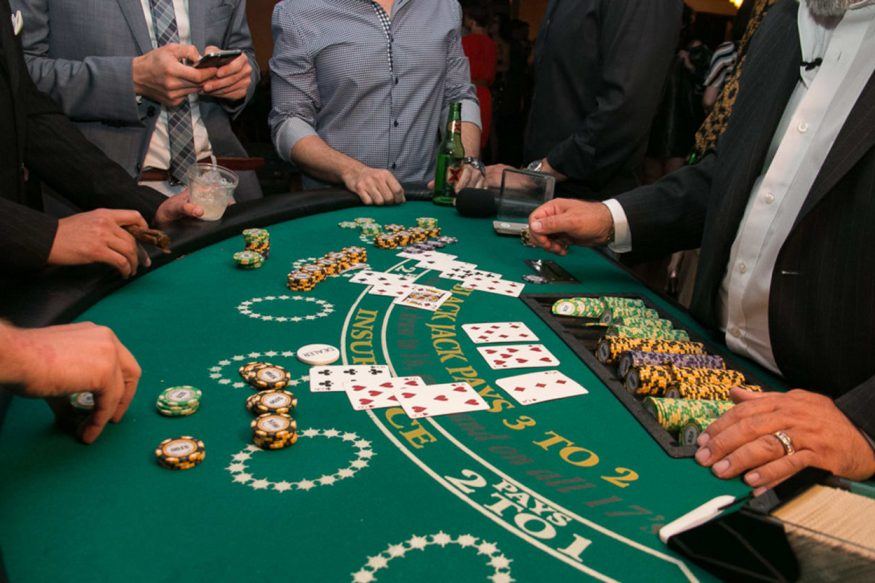
Introduction: Bringing Classic Casino Fun Home
Blackjack has emerged as a top choice among popular card games for home entertainment, joining the ranks of Poker, Rummy, and Bridge. Its fast-paced gameplay, simple rules, and adaptability for any group size make it a fantastic addition to any game night. Home blackjack provides a low-pressure environment for improving skills like card counting, experimenting with bets of any denomination, and enjoying the game with as few as two people.
You don’t need professional equipment or a large gathering; all you need is a table, a deck (or two) of cards, and a willingness to have fun.
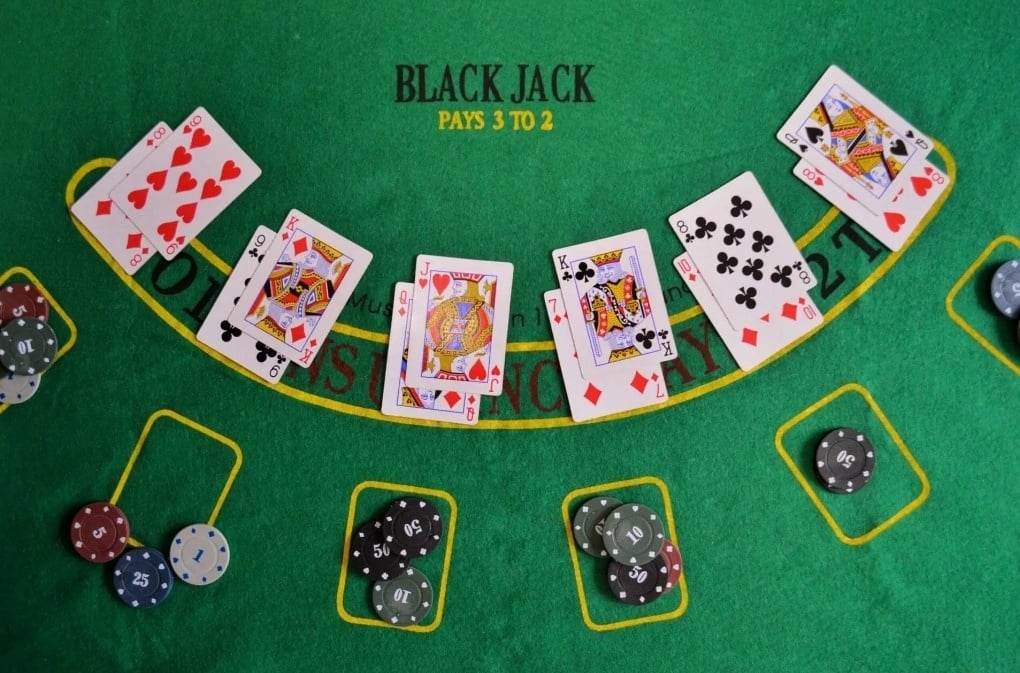
Image Credit: Shutterstock
Setting Up a Home Blackjack Table
Setting up a blackjack game at home requires only a few basic supplies, and you can make it as simple or as sophisticated as you wish. Here’s what you’ll need:
- Standard Deck(s) of Cards: For small games with 2-3 players, one 52-card deck suffices. To accommodate more players or reduce shuffling, use two decks. For fairness and ease, ensure all cards are the same design and color.
- Chips or Markers: Casino-style poker chips enhance the experience, but colored paper, coins, or even sticky notes can work as betting tokens.
- Table Surface: Any flat surface - a kitchen or dining table works perfectly. Arrange seats so the dealer can distribute cards comfortably across the table and players have clear spots for their cards and bets. Designate a space for chips that the dealer manages.
Basic Blackjack Rules for Home Games
Before dealing the first hand, it’s essential to review the foundational rules to ensure everyone enjoys fair and consistent gameplay.
Card Values and Setup
Remove both Jokers from the deck(s) before you begin. The values are:
- Cards 2-10: worth their face value
- Face cards (J, Q, K): worth 10 points each
- Aces: can count as 1 or 11, at the player’s discretion during play
With four different 10-value cards (10s, Jacks, Queens, Kings) in the deck, expect lots of hands centered around these cards-a fact that factors into basic strategies.
How a Round Plays Out
- Each participant places a minimum bet to begin.
- The dealer deals two cards face-up to every player, and two to themselves (one face-up, called the upcard, and one face-down, the hole card).
- Play proceeds clockwise from the dealer’s left.
Each player then chooses to “hit” (take another card) or “stand” (keep their current total):
- Hit: Receive another card from the dealer.
- Stand: Keep your current hand and end your turn.
Continue hitting until you choose to stand or exceed 21 points, which results in a bust.
After all players have completed their turns, the dealer reveals their face-down card and follows prescribed rules.
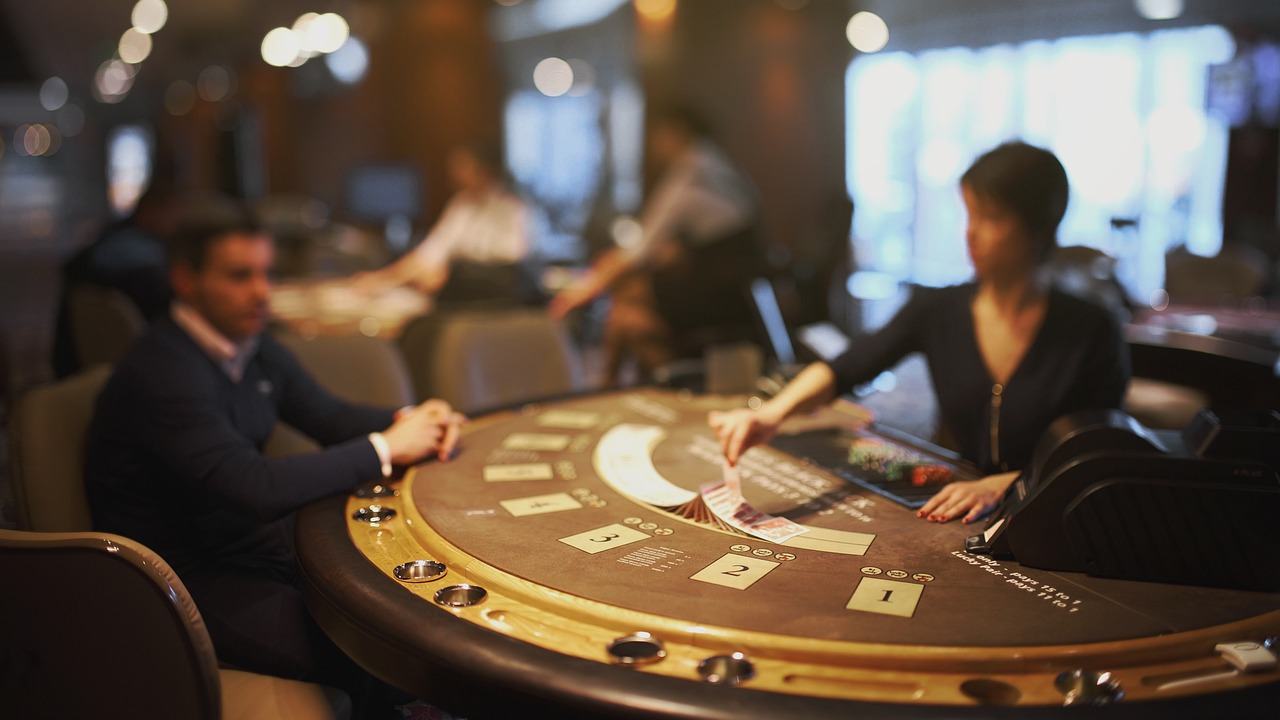
Image Credit: Shutterstock
The Dealer's Role
The dealer is responsible for acting as “the house,” managing the chips or betting tokens, and playing against all other players. The dealer has less flexibility-some standard rules for home play include:
- The dealer must continue taking cards (“hit”) until their hand reaches at least 17 points.
- If the dealer draws an Ace and a 6 (“soft 17”), they must usually hit again. If another 10-value card is drawn, the Ace counts as 1, keeping the dealer in play.
- If the dealer busts (exceeds 21), all remaining players win.
- The dealer pays out winnings or collects bets based on outcome.
Essential Blackjack Strategy Tips for Home Play
No matter where you play, understanding basic strategy ups your odds and adds excitement. Here are some easy-to-follow tips for your next home game:
- Always hit when your hand totals 11 or less.
- Always stand when your hand totals 17 or higher.
- If the dealer’s upcard is between 2 and 6, stand on 12 or above (increased chance the dealer will bust with a likely 10-value card hidden).
- If your hand is 12-16 and the dealer’s upcard is 7 or above, hit (the dealer is likely to reach a higher total or force you to beat a strong hand).
Take advantage of opportunities to use house rules and special moves:
Doubling Down
Double down to increase your wager (up to double your initial bet) after the first two cards. You’ll receive only one additional card. This is best used when you have a total of 11, as you have a high chance of hitting a 10 and making 21. Doubling on 9 or 10 is also common, especially when the dealer shows a weak upcard (2-6).
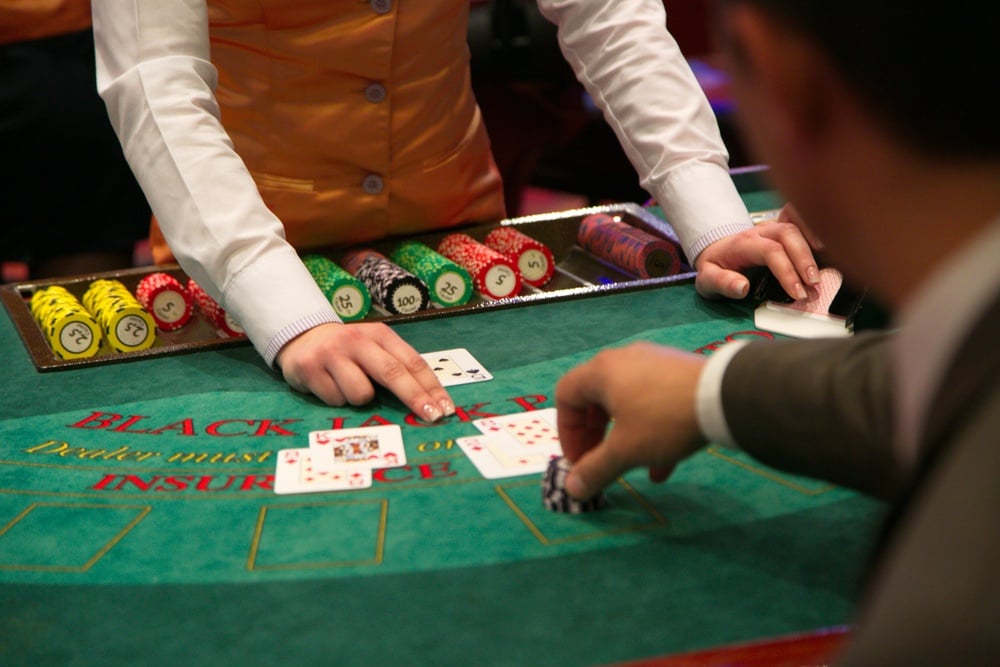
Image Credit: Shutterstock
Splitting Pairs
If dealt two cards of identical value (for example, two 8s or two Aces), you can split them into two separate hands by matching your original bet. Each hand is then played independently with normal options (hit, stand, double down).
Introducing the Five-Card Charlie Rule
To inject extra excitement, consider adding the “Five-Card Charlie”: any player who draws five cards without busting wins automatically. This fun twist is not part of most casino rules but is a favorite for casual home games.
Organizing a Home Blackjack Game Night
To keep the atmosphere engaging and fair, establish clear guidelines before you start:
- Have all players exchange cash for an even amount of chips at the start.
- Determine a minimum bet and clarify how chips translate to winnings.
- You can decide if the winner takes all at the end of the night or offer prizes for first, second, and third place based on chip count.
Winning, Losing, and Payouts
Define your home game’s payout system before play:
- Winning Hand: If a player’s total is closer to 21 than the dealer without busting, they win and are paid even money (1:1 payout).
- Dealer Busts: If the dealer goes over 21 and the player has not bust, that player wins.
- Blackjack: A two-card hand totaling 21 (Ace plus a card worth 10) typically pays 3:2, though you can decide your own house rate.
- Losing Hand: The player loses their bet if their total is under the dealer’s and does not bust, or if they exceed 21.
- Dealer Blackjack: If the dealer gets blackjack, all players lose unless they also have blackjack (a “push” or tie).
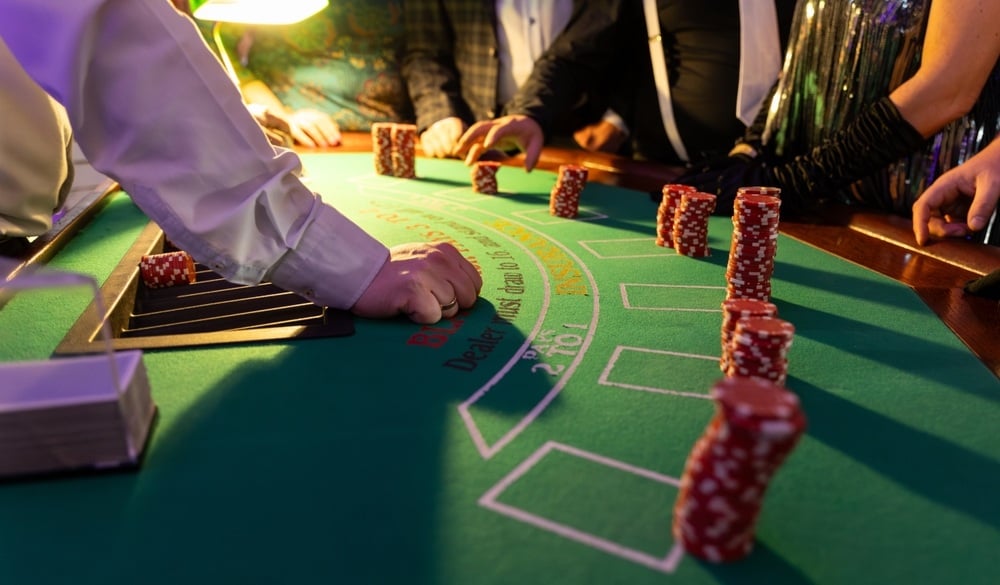
Image Credit: Shutterstock
What Is a Push?
A push, or tie, occurs when both the dealer and player finish a round with hands of identical value. In this case, the player’s original wager is returned, and no one wins or loses that round. This applies even in the rare event both have blackjack.
Dealer Rotation in Home Games
To balance the experience, rotate the role of dealer clockwise each round. This way, everyone gets a chance to play “house” and manage payouts.
Creating an Authentic Casino Atmosphere
Enhance your game night by decorating with playing card motifs, using authentic chips, or playing background music reminiscent of a casino floor. Encourage guests to dress up or serve themed snacks to complete the mood and immerse everyone in the vibe of a real casino.
Establishing End-of-Night Rules
Plan in advance how you’ll wrap up the session. Options include setting a timer, pre-determined chip goals, or ending play when one person possesses all chips. Decide whether the player holding the most chips wins the main prize or if you’ll recognize multiple winners.
Conclusion: Make Your Next Game Night Unforgettable
Hosting blackjack at home offers a social, engaging way to enjoy a timeless casino game without ever stepping foot outside. With the right supplies, clear rules, and a touch of creativity, you can recreate the thrill of the casino for friends and family. Gather your cards, chips, and guests-then let the games begin!
Title Image Credit: Shutterstock













